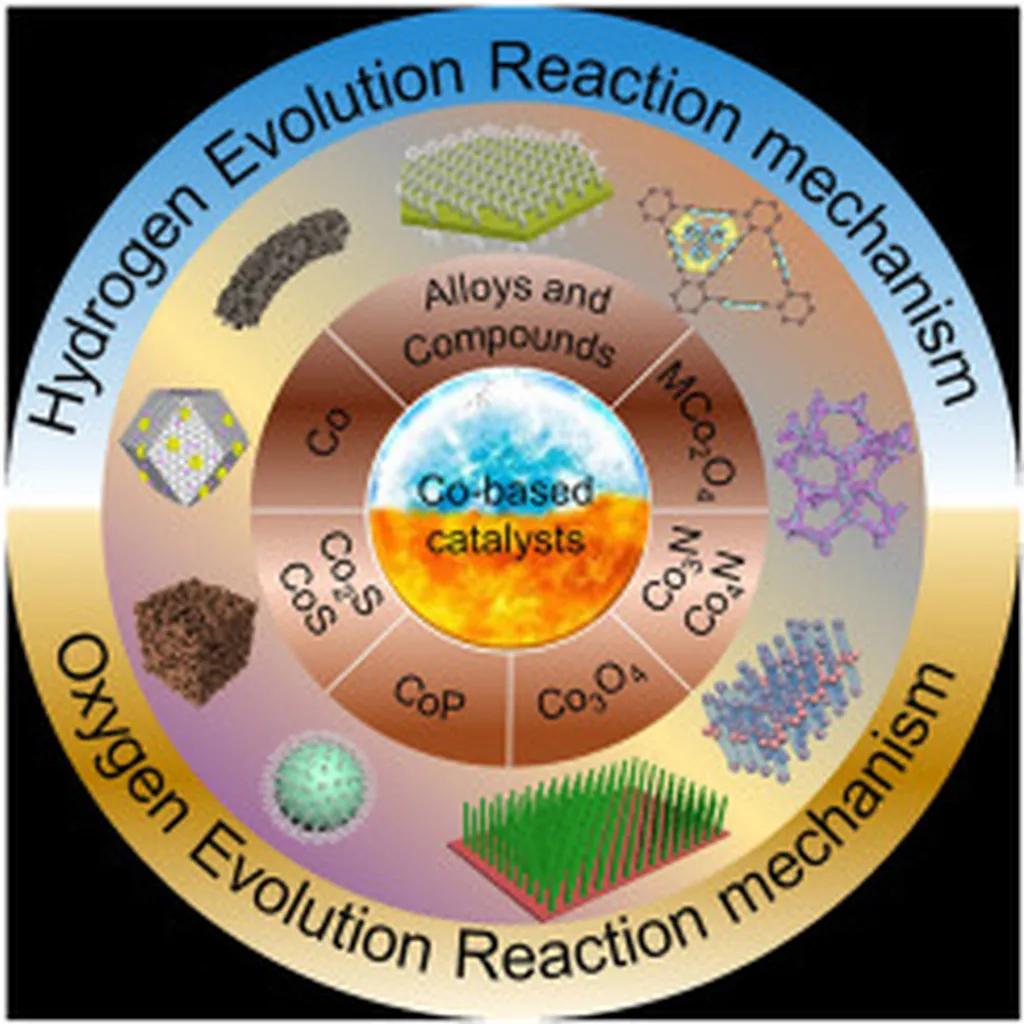In the relentless pursuit of clean energy, scientists are continually seeking innovative ways to make water splitting more efficient and cost-effective. A groundbreaking study published in Energy Material Advances, the English translation of the journal name, has unveiled a promising new electrocatalyst that could revolutionize the hydrogen and oxygen evolution reactions, crucial processes in water electrolysis. The research, led by Khang Nhat Nguyen from HUTECH University in Ho Chi Minh City, Vietnam, introduces a novel Mott–Schottky material, Au/Co3O4, deposited on a carbon cloth substrate, which exhibits remarkable performance and durability.
The quest for efficient water splitting has long been hampered by the need for catalysts that are not only high-performing but also stable and affordable. Nguyen and his team have addressed these challenges head-on by developing a material that ticks all the boxes. “We aimed to create a catalyst that would maximize performance while minimizing costs and ensuring long-term stability,” Nguyen explained. The key to their success lies in the strategic use of gold nanoparticles and cobalt oxide, combined with a robust and low-cost carbon cloth substrate.
The researchers discovered that exposing the material to ultraviolet light for just 30 minutes was the optimal duration for depositing gold nanoparticles. This process strikes the perfect balance between maximizing gold loading and preventing potential photochemical corrosion of the cobalt oxide. The resulting material, dubbed CC-30, demonstrated impressively low overpotentials of 121 mV for the hydrogen evolution reaction (HER) and 160 mV for the oxygen evolution reaction (OER) in a 1.0 M potassium hydroxide (KOH) solution. This means that the overall water-splitting process requires a mere 1.51 volts, a significant achievement in the field.
But the true testament to the material’s prowess is its durability. After 100 hours of continuous electrolysis in a 3 M KOH solution, the electrode showed a negligible increase in voltage of just 0.06 V, indicating exceptional long-term stability. This durability is a game-changer for the energy sector, where the longevity of catalysts is a critical factor in the commercial viability of water electrolysis technologies.
The study delves deep into the mechanisms behind the material’s success. Fourier transform infrared spectroscopy and electrochemical impedance spectroscopy revealed that gold promotes faster charge transfer and stabilizes a higher ratio of Co2+ during the HER, facilitating crucial redox transformations. In the OER, the Au/Co3O4 interface accelerates the transition from Co3+ to Co4+, promoting the formation of a –C=O intermediate and enabling –O–O– detachment, which enhances gas evolution kinetics.
Density functional theory calculations further illuminated the intricate interplay between the gold and cobalt oxide at the atomic level. Different interface structures result in opposite charge redistributions, highlighting the complexity and sophistication of the material’s design.
The implications of this research are far-reaching. As the world transitions towards a hydrogen economy, the demand for efficient and durable electrocatalysts will only grow. Nguyen’s work offers a compelling solution that could significantly reduce the costs and improve the efficiency of water electrolysis, paving the way for a cleaner, more sustainable energy future. The study, published in Energy Material Advances, marks a significant step forward in the field and sets the stage for further innovations in electrocatalysis. As the energy sector continues to evolve, materials like Au/Co3O4 on carbon cloth could play a pivotal role in shaping the future of clean energy technologies.

